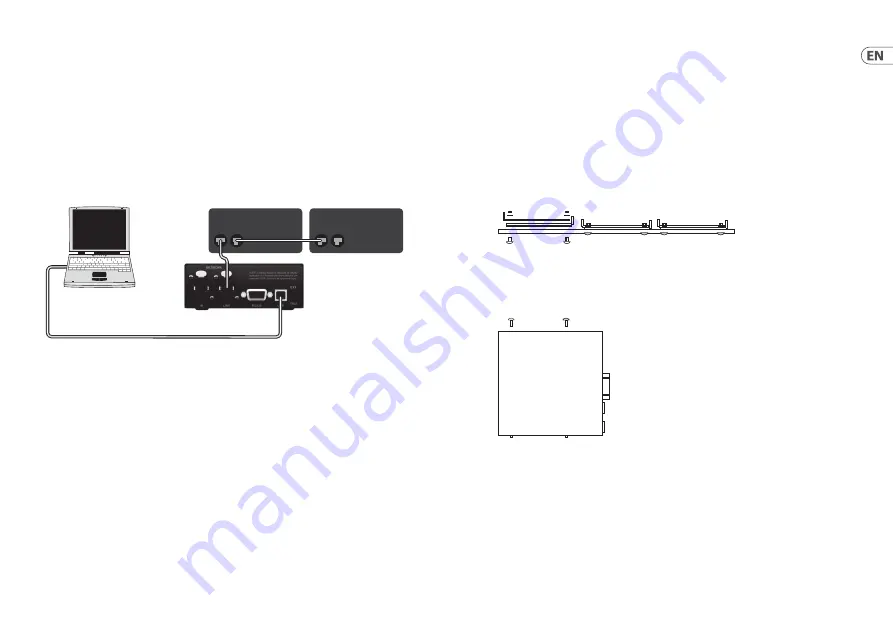
26
27
Quick Start Guide
VNET USB RS232 INTERFACE
USB
You can connect your computer to the VNET™ Interface via USB using a USB Type A to USB Type
B cable as in diagram 2. It is not usually necessary to use a Power Supply to power the VNET™
Interface when using USB, since USB will supply sufficient power for the Interface. If there are
any Network powered devices on the network however, then it will be necessary to use the
Accessory Power Supply
Connecting Devices
Connect the VNET™ Link socket on the VNET™ Interface to the VNET™ In socket of the first
device you wish to control, then the VNET™ Link socket of this device to the VNET™ In socket
of the next device, and so on. The order in which the devices are connected is not important.
The Link socket of the last device in the ‘chain’ need not be connected. The In socket of the
VNET™ Interface is intended for special applications, and would not normally be connected.
The “Ethercon” network connectors are fully compatible with standard RJ45 Ethernet patch
cables which may be used to make these connections. If additional ruggedness is required,
we recommend using the Neutrik Ethercon locking type of connector.
Devices
BvNet
Adapter
Computer
VNET
In Link
VNET
In Link
Diagram 2
Racking
The VNET™ Interface and Accessory Power Supply may be used free-standing.
If you wish to mount them in a 19-inch rack, then the VNET™ accessory rack-mount kit may be
used. To mount an Accessory in the Mounting Kit panel:
1. Remove the two mounting brackets and blanking sheet which are covering the aperture
you wish to mount the Accessory in, by removing the two nuts. (Keep these and the screws
and washers).
2. Remove the two screws from one side of the Accessory
3. Using the two screws removed in 2, attach one mounting bracket loosely to the side of the
Accessory, with the “ear” towards the front, pointing outwards.






























